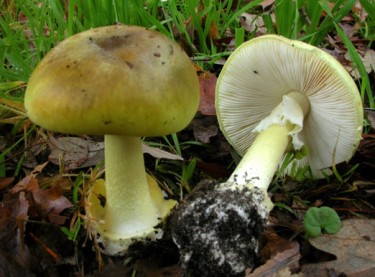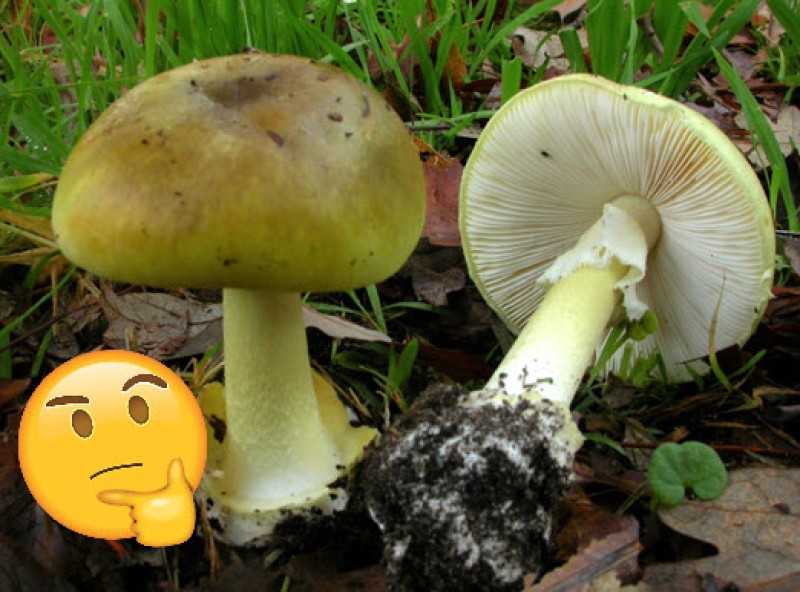It’s a good time for mushrooms right now.
We are living in the midst of a mushroom boom, where we can see mushrooms in almost every consumer category. From food, supplements, wellness, to fashion and home, mushrooms are everywhere. People are discovering the unique benefits that fungi can bring. If you live in the right place, you can even forage for mushrooms in your backyard.
Then there is also the rise of the psychedelic revolution, where nothing else but the humble mushroom sits at the very top. These magnificent psychedelic mushrooms are being microdosed by everyone from stressed out moms and tech billionaires to folks who have been struggling with post-traumatic stress disorder. Magic mushrooms also enjoys the reputation of being one of the safest recreational drugs in the world, so more and more people are choosing to trip out on psilocybin instead of drinking wine or engaging in other harmful drugs.
That said, it must be noted how many different mushroom species there are. If you are new to the world of fungi and mycology, it is always wise to tread with caution because not all mushrooms are made the same way. In the same breath, we can say that not all mushrooms will be good for you. This is why foraging must be left to experts.
Enter the death cap.
Amanita phalloides, the death cap, has been notorious as the world’s deadliest mushroom for centuries now.
The death cap is native to Europe, and it’s widespread there. However, it is also commonly found around the United States, particularly growing around oaks, elms, and birches; it can also be found in gardens.
Its cap ranges in color; it may be pale brown, yellow, white, or green. Meanwhile, the gills are white, and the stipe (mushroom stalk) usually has a ring. Death caps can grow up to 15cm in height.
A white membrane typically covers the entire mushroom though it will eventually break.


Image source: Royal Botanic Gardens Victoria
What happens when you consume a death cap?
According to Scientific American, there have been reports from individuals who managed to survive after eating these mushrooms. They reported a pleasant taste, though it will result in unpleasant effects soon after: seizures, liver damage, vomiting, and death. In addition, Scientific American reports that the accidental ingestion of death caps takes the lives of hundreds of people each year.
It remains a mystery how and why the death caps are so deadly. What we do know is that the lethal compound in these mushrooms is called alpha-amanitin (AMA).
However, it doesn’t take much of this notorious mushroom to kill you: one would only need to ingest part of the cap, and that would already cause the liver to shut down completely. Without immediate medical attention, this can cause death. This is why foraging should never be done casually; if you intend to forage, always do so with an expert alongside you.
Antidote To Death Caps?
For many decades, individuals (including children) who accidentally ingested death caps had no hope due to the lack of knowledge among the scientific community. An antidote has never been made, until very recently.
Research that has been published just last month in Nature Communications reveals that Australian and Chinese scientists have successfully been able to develop an antidote that can save lives. A report says that the antidote already exists, and that it’s already been approved by the FDA. At this time, it has only shown to work on mice as well as human cells in the lab, but it could be beneficial in preventing many other accidental deaths in the future from people who ingested death caps.
The antidote is none other than indocyanine green (ICG), a common dye that is used in medical laboratories to analyze liver and heart function. The research team discovered that the ICG works to stop the alpha-amanitin from doing its job.
“So far, it remains unclear how exactly death cap mushrooms kill people,” explains Qiao-Ping Wang, the study’s co-author, and a professor at the School of Pharmaceutical Sciences at Sun Yat-Sen University in China. “But it was thought to have the most toxic toxin, AMA, responsible for its cytotoxicity,” Wang tells Live Science in an email. Wang goes on to tell Live Science that AMA has been shown to prevent RNA transcription, which is the process that describes when a DNA strand is copied into a new molecule to create new proteins; RNA transcription is also “an essential biological process for cell function and survival,” Wang says.
Additionally, the research team consulted with the US FDA, who has a list of some 3,200 compounds that have been approved. They found that only indocyanine green was effective in preventing cell death caused by the AMA toxin.
During the tests, they used CRISPR, which is a technology used in genome editing, to produce human cells that contained various mutations. They then tested which of these mutant cells were able to survive after AMA exposure.
“We confirmed these findings in liver cells and liver organoids,” said Wang. Because the liver is the primary target of the AMA. “The results demonstrated that ICG can prevent liver damage as well as kidney induced by AMA. Importantly, ICG could improve survival after AMA poisoning,” Wang adds.
Conclusion
The world of mushrooms is no doubt fascinating, but it is also so vast. It takes years of experience and practice in order to be able to identify mushrooms correctly. Eating the wrong ones could be your last meal if you aren’t careful!






